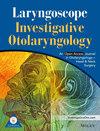Biologic Therapy Relieves Otologic Symptoms and Signs in Patients With Asthma and Chronic Rhinosinusitis With Nasal Polyps
Abstract
Objectives
Multiple biologics are available for severe asthma and chronic rhinosinusitis with nasal polyps (CRSwNP). Otologic symptoms are common among these patients, and otitis media (OM) is considered part of the associated eosinophilic multimorbidity. However, few studies describe the effect of biologics on OM. This study aimed to explore whether type 2 anti-inflammatory biologics can also alleviate otologic symptoms and signs.
Methods
We retrieved patients who were prescribed biologics for CRSwNP from the electronic patient records (EPRs) of a tertiary referral ear, nose, and throat center. We also included patients from two previous studies on otologic manifestations of NSAID-exacerbated respiratory disease (NERD), who were prescribed biologic medication at a skin and allergy center. Patients who were followed up for less than 12 months were excluded. Demographic information and the response to the biologic therapy were collected from EPRs. Regular appointments were at 0, 4–8, and 12 months, and included a physical examination by ear, nose, and throat (ENT) specialist and two validated patient-reported outcome measures (PROMs): the Sino-Nasal Outcome Test-22 (SNOT-22) and the otology-specific Ear Outcome Survey-16 (EOS-16).
Results
All of the 40 patients included had CRSwNP, and 90% had asthma. A total of 17 (42.5%) had clinical otologic signs before starting biologic medication. The main indications for biologic therapy were CRSwNP (70%) and asthma (22.5%). Three patients (7.5%) had both CRSwNP and asthma, but their severe OM symptoms were the main indication for biologic therapy. The SNOT-22 scores were significantly lower at 12 months in all the ear/facial domain questions: ear fullness (Z = −3.434, p < 0.001), dizziness (Z = −3.452, p < 0.001), ear pain (Z = −3.097, p = 0.002), and facial pain/pressure (Z = −3.133, p = 0.002). Similarly, the EOS-16 yielded significantly lower scores (Z = −2.791, p = 0.005). Additionally, the clinical otologic signs improved (Z = −2.994, p = 0.003).
Conclusion
The biologics prescribed for asthma and CRSwNP significantly reduced otologic symptoms and signs. Prospective studies are warranted to explore associated OM as a new target for biologic therapy.


 求助内容:
求助内容: 应助结果提醒方式:
应助结果提醒方式:


